SL-1210Mk5
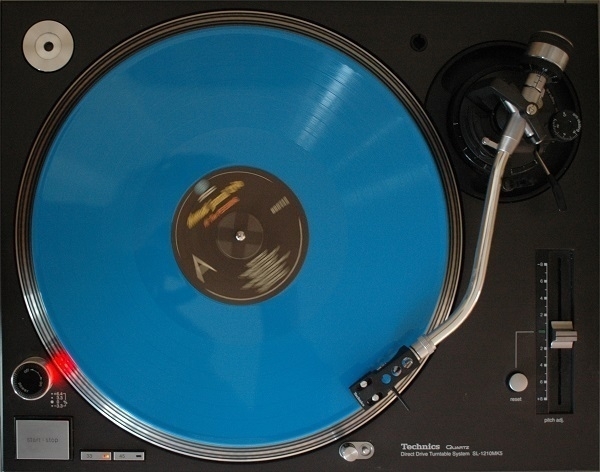
Pictured above is my Technics SL-1210Mk5 turntable. The blue LP spinning on it is a 2020 re-issue of Ahmad Jamal At The Pershing. I bought the turntable some eighteen or nineteen years ago, since when it has provided me with nothing but trouble-free listening pleasure. It was expensive, but in value-for-money terms it has proven to be a bargain.
Coming of age in the heyday of the Walkman, I began buying music on cassette – out of practicality (and for reasons of economy) rather than due to any attraction inherent in the medium. A decade later I made the leap from cassettes to CDs. I didn’t obtain my first record-player until 2001. That was a second-hand late-70s/early-’80s Ferguson unit picked up at a junkshop. While it wasn’t exactly a high-quality item, at that point the attraction was all about the novelty of getting any old crackly sound out of the dirt-cheap vinyl I was buying.
When the Ferguson gave up the ghost, I sought out something that would be easier to connect up to my PC’s sound-card, my focus having shifted to the desire to digitise some of my newly-accumulated analogue music. I settled on an inexpensive Kenwood-brand player which, alas, proved to be a poor choice. The build quality left much to be desired, and nor was the sound quality anything to shout about. My frustration with it led me to consider shelling out rather more for a model with a reputation for solid reliability: the SL-1210.
It took a while to get a Mk. 5 on order as this was a time (2005 or ‘06) when demand was at something of a low ebb. Come the end of the decade the SL-1210 would fall out of production altogether – until the vinyl revival belatedly summoned it back from the dead. Having used it first in digitising music, or for listening through headphones, I eventually did the decent thing and hooked it up to an amp and some speakers, in which configuration it’s done a round decade’s sterling service. The worst thing I can think to say about the thing is that the dust-cover seems to have been something of an afterthought: I ended up badly damaging my original one and had to get an aftermarket replacement.
All Thoughts Fly

In childhood I came to connect the sound of church organs with feelings of chilly discomfort, boredom and alienation. I should know better than to harbour continued prejudice against this kind of instrument, but those early associations have proven hard to shake off. The doleful onset of a traditional hymn-tune is still liable to provoke feelings of disquiet, but when a pipe-organ is used to play less conventional material, I have found I can enjoy it rather better.
A case in point is the album All Thoughts Fly by the Swedish composer and musician Anna von Hausswolff, released in 2020 but only very recently added to my shelves. It comprises seven solo instrumental pieces played by von Hausswolff on a church organ in her native Gothenburg, with some additional electronic manipulation apparently applied thereafter. The resultant music combines elements of the austerely minimalistic and of doomy drone, with plaintive lyricism.
The album cover photo was taken in ‘Sacro Bosco’, a sculpture-garden in Italy commissioned by a grieving nobleman after his wife’s death. Its title is a translation of an inscription (ogni pensiero vola) carved into the statue there of the underworld god Orcus, a “punisher of broken oaths”. Pensiero (I’ve been told) can translate, in certain contexts, not just as ‘thought’ but more specifically as ‘preoccupation’ or ‘anxiety’ – I’ve wondered whether the inscription could be interpreted in that light.
Another church organ performance I’ve grown to love is Irene De Ruvo’s rendition of Sweelinck’s Fantasia Chromatica on a 17th-Century Italian instrument.
Cesanese
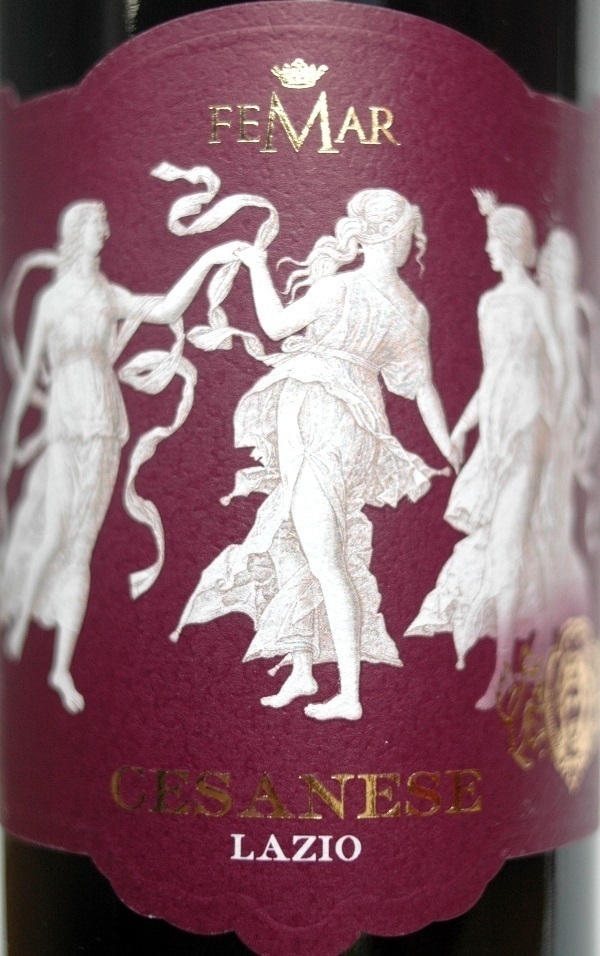
Cesanese is a grape variety native to the Lazio region of Italy. I came to know it during my time in Rome, as the ingredient in the cheapest local red I found I actively enjoyed. The wine in that blue-labelled bottle seemed to me to be best served slightly chilled. On winter evenings in my inadequately-heated apartment it hit the spot just right. I didn’t enjoy it nearly as much in the heat of summer. It formed a significant part of my unhealthy alcohol intake in the winter of ‘96/‘97.
The variety’s lack of renown must be due in part to the difficulties its late-ripening tendencies pose the vintner – so says this article – which continues: “When made well, however, Cesanese can demonstrate rich, ripe cherry flavors with some floral characters and sometimes a touch of red pepper.” On the other hand, in The Oxford Companion to Wine (art. ‘Lazio’) we’re told that “most Cesanese is neither well-made nor interesting.” Well-made or not, it’s a wine that seldom seems to leave Italy.
I’d not had a drop of the stuff in at least twenty-five years when I saw the wine pictured above on the shelves of the local Lidl. For old times’ sake I bought a bottle, consuming a large glass of it on a cold night. No flood of Proustian recollection was forthcoming, and I found it good, but not outstanding. Even with my lacklustre palate I discerned cherry-like notes, if perhaps with a faintly sharp edge of unripeness about them. Even so, on returning to Lidl and seeing the Cesanese had been selling slowly, I picked up a second bottle of the stuff.
Final Phonebook
A new copy of The Phone Book (for Newport and South East Wales) arrived here last month. At a mere 152 pages it’s a thin shadow of the telephone directories of yore. No-one would choose to rip this one in half as a feat of strength. I was going to include a scan of its cover in this post, but it’s unlovely enough that I’ll just link to it instead.
Not just another new copy, this is the very last one. The grim words “FINAL EDITION / Hold on to it forever” make that plain. I don’t imagine many will obey that instruction. Very few folk will have any practical use for it, and such utility as it holds will further fade with time. Even from the standpoint of historical interest, any Yellow Pages from the tail end of the last century will contain much more of value than this vestigial thing.
I recall in the later ’90s feeling vaguely perturbed that each new phone-book seemed thicker than the last, wondering where the ever-bulkier unwieldiness of each new edition could be leading. But then there came a point where new phone-books arrived alongside those AOL CDs offering free trials of dial-up internet access, which proved to be, alongside the simultaneous explosion in mobile phone use, the beginning of the end for them.
Foolscap
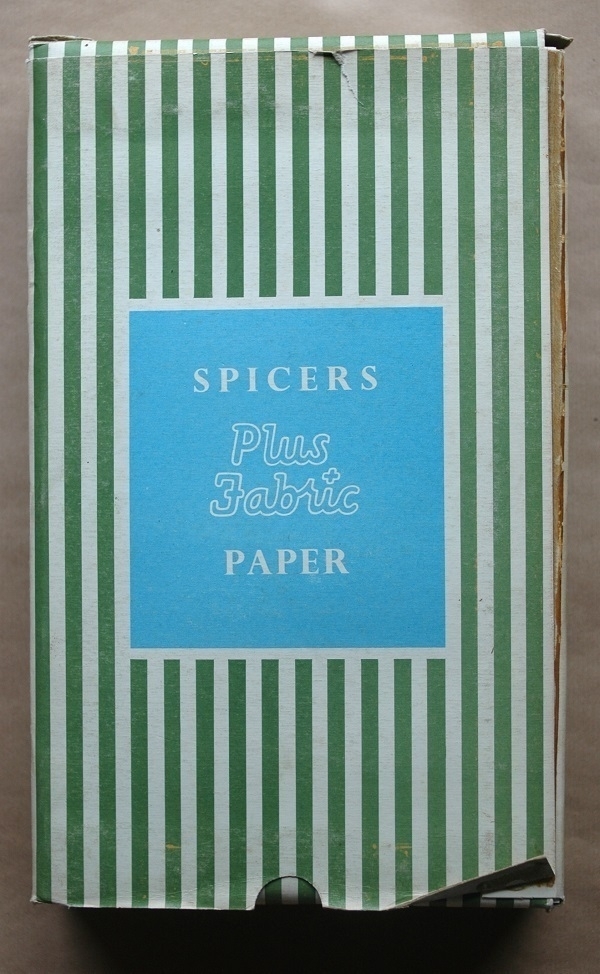
Late last year I acquired a virtually-unused ream of foolscap paper. It’s ‘Plus Fabric’, made by Spicers, in a larger size and a lighter weight than my other box of the stuff. Foolscap was once the default paper-size for office use in the UK, until A4 eclipsed it during the ’70s and ’80s. Initially referring to a style of watermark, foolscap came to denote specific dimensions, which, with regard to paper for writing, typing and copying, were 8"x13".
When I first began buying refill pads of my own at WH Smith to use for schoolwork back in the early ’80s, it seemed that A4 and foolscap were both equally readily available. Within a year or two, however, the latter size became harder to find, at length no longer being sold at all. I was annoyed as I preferred its elongated profile to the squatter and squarer A4. Having since become so thoroughly accustomed to the ‘new’ format. foolscap now seems oddly oblong. This box of it will be ideal for typewriting purposes - I just now need to find the equivalent of some A5, A6 or DL envelopes I can fold the sheets into.
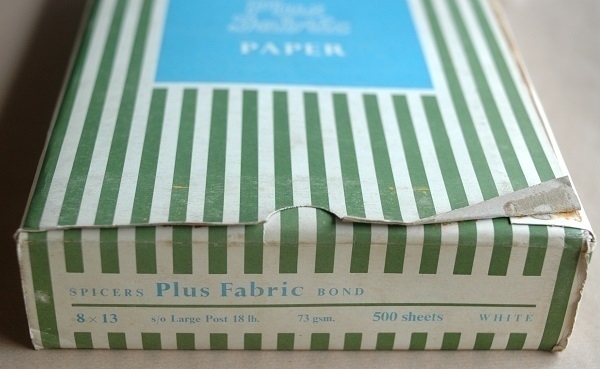
Fitzcarraldo
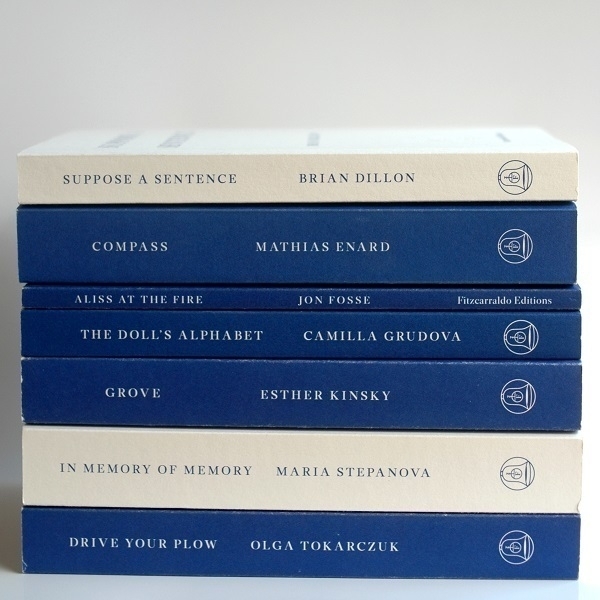
Pictured above are the seven books published by Fitzcarraldo Editions that are currently at home on my shelves. An eighth (Mathias Énard’s The Annual Banquet of the Gravediggers' Guild) is on the ‘to be read’ pile). Another four or five have come & gone. The first one I acquired was Camilla Grudova’s wonderful short-story collection The Doll’s Alphabet.
Fitzcarraldo have brought a breath of fresh air to British publishing with their steadfast endorsement of quality literature in translation. By the expedient of publishing excellent authors previously un- or under-represented in English, their list now includes four Nobel prizewinners. As well as the high quality of the texts, I very much like the consistent simplicity of their jacket designs.
I don’t always find the interior design of their volumes as pleasing, but it usually works well enough. One mis-step (in my opinion) was their ungainly edition of Olga Tokarczuk’s The Books of Jacob, too hefty a tome that would have been much better subdivided into two or three volumes. I’ve my eye on a few more of their titles and look forward to seeing what else they come up with!
The Long Room

Something else from my time in Sweden, a picture of an extraordinary indoor space, the Repslagarbanan, that is the ‘rope-walk’, in Karlskrona. It’s a 300m-long 17th-century wooden shed formerly used for rope-making by the Swedish Navy. The building is located within the grounds of the current navy base, and is normally off-limits to the public, apart from on their annual open-days.
I took it with my Nikon F80 using Ilford Delta 400 film. There wasn’t a great deal of available light and I had to try resting the camera on some kind of surface to get a long-enough exposure, as illustrated by the general lack of sharpness and more particularly by the blurred figures in the distance (more readily visible in the full-size image). I’d hoped to get a shot without anyone in view, but that wasn’t to be.
Ostehøvel

On moving to Sweden my first residence was a ground-floor flat in a white-painted wooden house that was on the shore of a small island (while still being part of the town). The house had its own jetty with a boat moored to it, and there were apple and cherry trees in the garden; but the bathroom was tiny and the upstairs neighbours not light on their feet. My wife and I were there for less than a year before the landlords decided they didn’t want to rent the place any more. When we moved out we helped ourselves to the old cheese-plane (shown above) that had been one of the utensils in the apartment’s kitchen. That was in 2001: I still regularly use it now.
The cheese-plane was patented in 1925 by Norwegian inventor Thor Bjørklund. Only very recently did it dawn on me that my purloined slicer was an ostehøvel manufactured by the company Bjørklund founded. The handle is stamped with the text RUSTFRITTSTÅL (‘Stainless Steel’), while on the blade is a stylized logotype (‘Spar’) and the text RUSTFRI PAT. 64416. ‘Spar’ seems to have been a model name, and Pat. 64416 a 1940 follow-up to the inventor’s original patent.
Cheese-planes are optimal for firmly-textured Nordic cheeses, but also do very well with many of the less crumbly British ones. They’re useful too for slicing cold butter. I later acquired a second one, seemingly of Italian design (‘Giannini’ is the brand-name), but it doesn’t work anything like as well as the old Bjørklund one.
Mingus x 5

Looking around the Music One record shop in Abergavenny late last year I’d seen a few things that had caught my eye but only one – an LP including a couple of string quartets by the ‘Spanish Mozart’, Juan Crisóstomo Arriaga – where the asking price accorded with my unreasonable expectations. Then, among the jazz re-issues, I saw a copy of Charles Mingus' Mingus Mingus Mingus Mingus Mingus. I set my unreasonable expectations to one side for the moment, and picked up that one too.
This was an album I’d never owned, except as a download of questionable provenance. I’d listened to it, and knew I liked it, but, as is often the case for me with downloaded music, it had fallen out of sight and hence out of mind. On vinyl it sounded magnificent, and every time I’ve played the record it has been a real joy. It’s a kind of retrospective collection featuring re-arrangements for eleven-piece ensemble of several of Mingus' best compositions, plus a memorable rendition of Duke Ellington’s ‘Mood Indigo’.
Why Mingus Mingus Mingus Mingus Mingus, and not Mingus Mingus Mingus Mingus or Mingus Mingus Mingus Mingus Mingus Mingus? I’ve yet to find an explanation for that. Not unreasonably the album’s title is often abbreviated as Mingus x 5. As it happens, it’s one of five of the composer’s records I currently own on physical media. I’ve had Mingus Ah Um and The Black Saint and the Sinner Lady on CD for many years. I wrote a post about the former on my previous blog. The latter has a sunned and faded spine to show for its decades on the shelf. More recently I also acquired a CD copy of Blues and Roots.
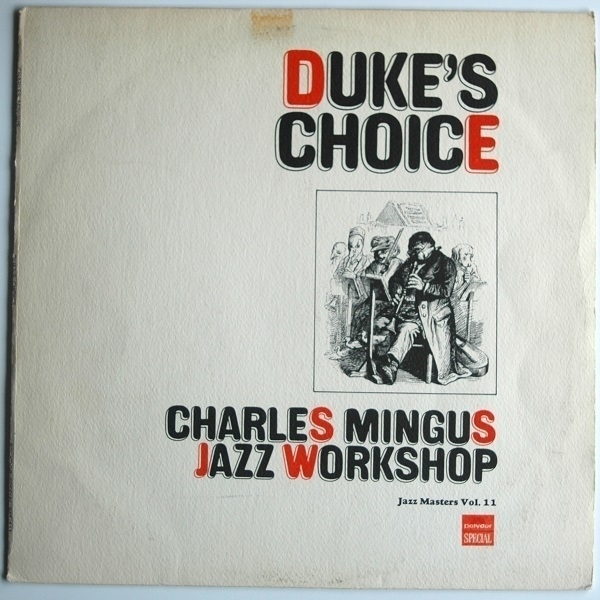
The once I found an affordable used vinyl copy of a Mingus album in the wild it was Duke’s Choice (credited to the Charles Mingus Jazz Workshop). This isn’t some little-known obscurity, but rather a re-titled ‘69 issue of the ‘59 LP A Modern Jazz Symposium Of Music and Poetry. The original title is arguably misleading, with the only poetry on the record being a striking narration on ‘Scenes in the City’ (the opening number) by actor Melvin Stewart. It’s a very good record, if not one of Mingus’ finest. The track ‘Duke’s Choice’, by the way, re-appears on Mingus Mingus Mingus Mingus Mingus as ‘I X Love’.
Saint André
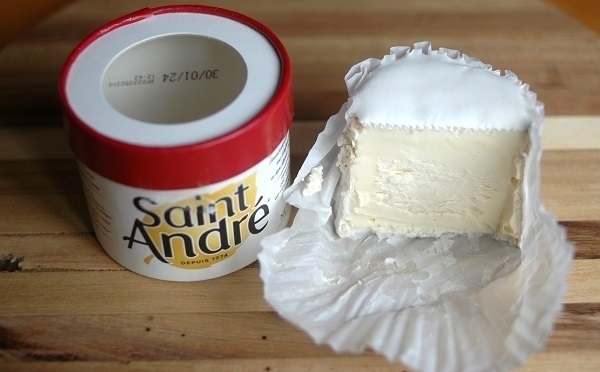
How is it that I passed the halfway point of my sixth decade before sampling a triple-cream cheese for the first time? That’s a question to haunt my twilit moments. At least now I have done so, thanks to my acquisition, last weekend, of some Saint André cheese from my local Tesco. On first cutting into it I was surprised at how firm was its texture: from its appearance I’d expected something softer. For a French cheese its flavour was decidedly mild, but sumptuously creamy.
On the side of the tub housing the cheese is a boast of its having won ‘super gold’ at the World Cheese Awards, which inclines me more to doubt the value of the Award than to unquestioningly assign merit to the cheese. Why isn’t regular gold enough for a top prize, as it is, for instance, at the Olympics? If gold must be outdone, what’s wrong with platinum? Dubious accolades aside, the cheese is really very good.
In her article on triple-cream cheeses in The Oxford Companion to Cheese, Soyoung Scanlan writes that “many cheese-lovers consider triple-cream cheese to be a somewhat dull entry-level cheese because of its mild flavor and light texture”. I’m not so far advanced in my own cheese journey to have lost a liking for the simple pleasures afforded by plainer, mass-produced examples, and this is one such pleasure I intend to revisit.
Without Let or Hindrance

Imagining I might spend the summer after my final year of University inter-railing around Europe, I ordered my first passport in the spring of 1990. A page from it is shown above. By the time it arrived, I knew that in no way could I afford not to spend the whole summer working. For quite some time it proved to be of no use to me at all. I’d travelled overseas exactly once during childhood – but hadn’t needed a passport of my own at that time. My next opportunity to leave the UK didn’t come until ‘93 – my first trip to Paris – so I finally got to brandish it then. It’s one of the old-style blue passports that pre-dated the burgundy EU common format ones that many Brexiteers so resented.
Travelling in Europe a fair amount in the later ’90s I did eventually get my money’s worth out of the thing. It also accompanied me on my first four trips to North America, with stamps on pages 5, 6 (x2) and 9 to mark those occasions. My second passport (2000-10), was also well-travelled; but the third (2013-23) I used only twice. With no forseeable prospect of further international journeys, I have yet to order passport #4.
G. Lalo

Shown above is the information on the back of a box of vintage G. Lalo writing paper and envelopes. The front of the box (see below) is rather plain. The blue laid paper within has lightly scalloped edges. Twenty-eight of the fifty original sheets remain. The sheets are about 19cm x 24.2cm (approx 7½" x 9½"). Out of the full complement of envelopes – all lined with white tissue-paper – only eleven are missing.
Georges Lalo began selling stationery in Paris in 1919. Happily, it’s is still a current brand today. I’m working my way through a pad of G. Lalo Vélin de France paper at the moment.

Poor Things
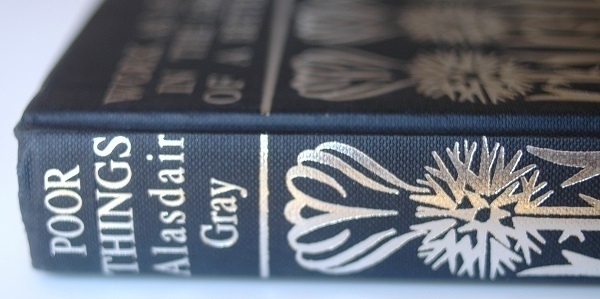
With the recent release of the movie adaptation of it, there has been much discussion of late about Alasdair Gray’s 1992 novel Poor Things. It’s a book I only got around to reading a few years ago. In August 2020 I ordered a first edition copy with a lightly distressed dust-jacket for less than £5, postage & all. Now one might be hard-pressed to find a similar volume for under £50.
I enjoyed the story, though I wasn’t enamoured with all the aspects of Gray’s evidently hands-on approach to book design. I have to admit I’m just not that fond of his illustrations. The whimsical blurbs on the front dust-jacket flap left me cold, as did the fake reviews on the rear one. While (as far as I know) the typography wasn’t Gray’s own handiwork, I thought it too left something to be desired. One thing I did very much like, on the other hand, was the cover design.
It features boldly stylized thistles in silver on blue cloth, and above them Gray’s oft-repeated motto “Work as if you live in the early days of a better nation” – words to live by, which for him would have been tied up with his devotion to the cause of Scottish Nationalism. On the acknowledgments page of the book, it states that “The epigraph on the covers is from a poem by Denis Leigh” when the poet’s name was actually Dennis Lee, and the lines he’d written that had inspired Gray were in his poem ‘Civil Elegies’, published in ‘72:
And best of all is finding a place to be
in the early years of a better civilization.
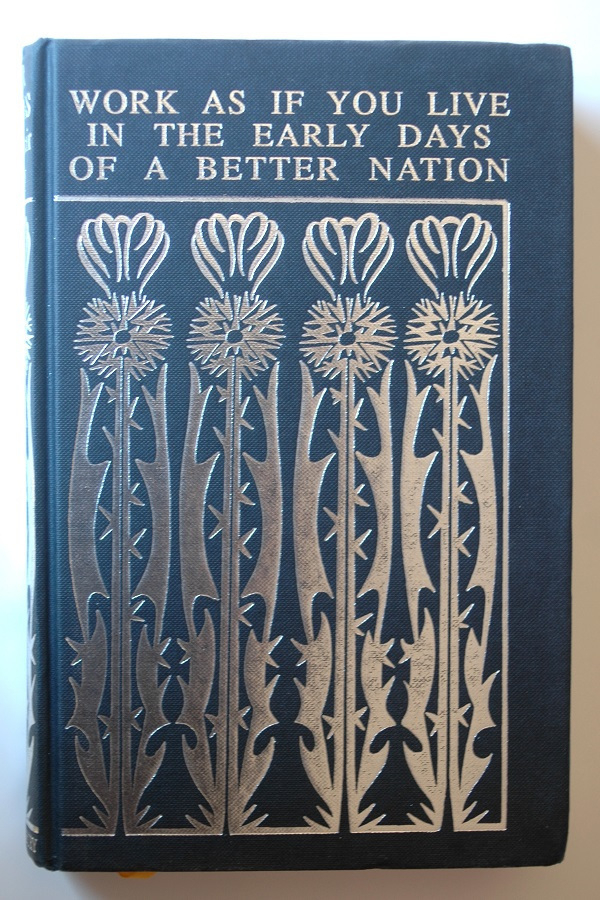
Swans

We’re nearing the end of a spell of chilly weather. With no new photos to illustrate it, I rifled through some older cold-weather snaps, turning up the one above. It was taken during the winter of 2010/11 in a landscaped part of the business park where my workplace was (and still is) located.
We see a pair of swans on frost-coated grass by a part-frozen pond. There is an icy haze in the air. If you look at a larger version of the image you might better see an eerie figure standing at the far side of the pond. The swans, alas, hadn’t long to live. Within weeks of my taking this photo, both birds were hit and killed by cars – in separate incidents.
I took this one with my ’50s Yashica Mat camera, using Kodak Tri-X 400 film. This was from a roll I didn’t develop at home, but rather sent off to Peak Imaging (sadly now defunct) to process.
Unicomp

I’m old enough to remember the computer keyboards of the ’80s, when such things were oftentimes still high-quality, heavy-duty input devices. As time went on I lamented the proliferation of shoddily-made, plasticky keyboards and yearned for something better. In 2003 I ordered, direct from the manufacturer, my first Unicomp buckling-spring mechanical keyboard, still made in much the same way as the legendary IBM Model M keyboards of yore. Over seventeen years' near-daily use it was never less than a robustly reliable pleasure to type on. It was still working well in 2020, but it had a PS/2 plug and my then-new PC was all-USB. After putting up with the awkwardness of an adaptor for a little while, I decided to buy a new keyboard.
From The Keyboard Company, I ordered a Unicomp ‘Ultra Classic’ keyboard in black with a USB plug and a UK layout. As a small extra, I also obtained a red Panic button to put in place of the Escape key. It has a slightly smaller footprint than the old Unicomp unit, and is a little lighter in weight, but otherwise it’s very similar. All being well, it’ll last me until 2037! I also have a second-hand Cherry MX 3000 keyboard with ‘blue’ key-switches which I use in conjuction with my work laptop when at home; and a vintage beige Compaq-branded rack-style keyboard with ‘brown’ switches (and a trackball) that gets used when I’m in the office – in preference to the awful excuse for a keyboard my cheapskate employers provided me with.
John Luther Adams

I’d known of the composer John Luther Adams' name long before hearing any of his music. Having read several positive reviews of his work, and having caught a few snippets of his piece Become Ocean on the radio, I thought I should give his music a proper hearing. About this time last year I ordered the 3-CD box set of his Become trilogy. The three works Become Ocean, Become Desert and Become River all get a CD apiece, which wasn’t altogether necessary with the former two works clocking in at around forty minutes' duration, and the third just shy of a quarter of an hour. Become River attempts to represent its subject by gradually moving from high & bright tones to deeper & broader ones. The other two pieces are broadly palindromic, although Become Ocean conveys something of a cyclical sense of oceanic grandeur, while Become Desert feels more akin to a diurnal transition from night to day and back again.
I was enamoured enough with these pieces to aquire another album of JLA’s soon afterwards – Sila: The Breath of the World. This contains a single piece which is intended to give both performers and audience considerable latitude in how the music is created and experienced: “Sila is scored for five ensembles of 16 musicians – woodwinds, brass, percussion, strings, and voices – who may perform the music in any combination, successively or simultaneously, outdoors, or in a large indoor space. The musicians are dispersed widely, surrounding the listeners, who are free to move around and discover their own individual listening points.” Hence any recording of the work can only be a snapshot of a single interpretation of it. Nevertheless, it does make for compelling listening. As it’s presented here, it makes an opposite kind of movement to Become River inasmuch as it starts with low notes and ends with high ones, as though embodying an irresistable ascent over the course of about an hour’s duration.
And, the other day, the post brought me the CD Darkness and Scattered Light where the sole instrument is Robert Black’s double bass, either heard solo or, on the title track, in five overdubbed parts. As I’ve only played it once this far I won’t attempt any kind of review. The cover image is in a similar nebulous vein to the one used for Sila.
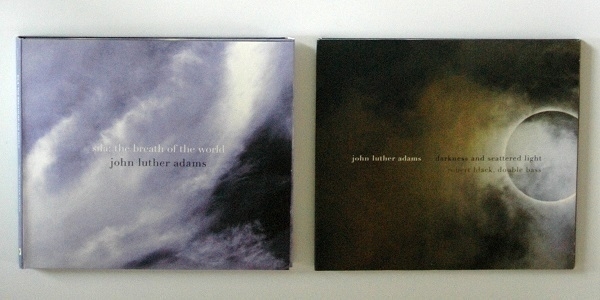
Year of Coffee

After a sixteen year period during which I must have consumed fewer than a dozen cups of coffee in total, I enjoyed an espessso almost every day during 2023. With a replacement gasket in my Moka Express pot; with more Lavazza Qualità Oro beans, and with a near-complete set of Tokyo Design Studio crockery (found in a charity shop), I’m ready for another year like it in ‘24!
The Ace of Spades, the Ace of Spades

Above are two Aces of Spades from old decks of playing cards I bought a couple of years ago. The first is from a De La Rue pack which dates back to the late ’50s (if the information on this page is accurate). It bears the company’s name and the text “Duty Three Pence”. It had once (before 1862) been a legal requirement in the UK for Aces of Spades to be marked thus, but in a 20th-Century pack this was just an affectation on the part of the manufacturer. The other card is from a more recent deck made by Piatnik in Austria.
Playing cards were a constant presence through my childhood: there would be games of Switch (akin to Crazy Eights) with my parents and my sister; and hands of Whist with my grandparents and Aunt. I’d play Patience (i.e. Solitaire) on my own to pass the time. At school there were games of Phat and Black Maria (which we coarsely called ‘Bitch’). In adulthood I played less, though my wife and I sometimes played Cribbage. Card games seem at risk of becoming a thing of the past: I wonder if smartphones, and the multitude of games they can contain, may risk pushing many classic games to extinction.
The title of this post, by the way, comes from the refrain of a well-known song.

Hans Bank
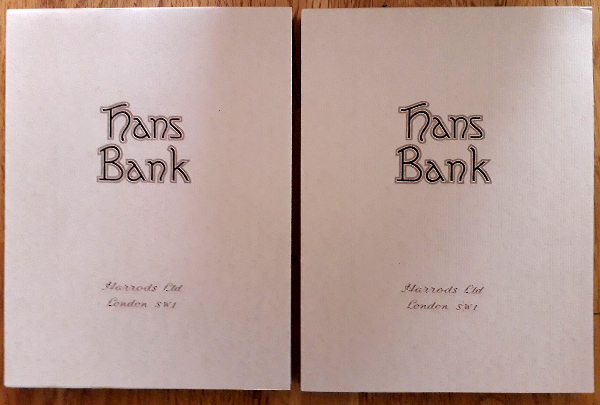
Shown above are a pair of mid-20th-Century Hans Bank writing pads, in ‘Duke’ size, as once sold by Harrods department store. ‘Bank’ in this case refers the the paper being thin and lightweight (ca. 50 gsm or less), while Hans St. is a Knightsbridge thoroughfare running alongside the store.
A 1912 Harrods catalogue shows they were already selling a line by that name before WWI, as a cheaper ‘Bank’ option, with Lowndes Bank (also named after a nearby street), being the costlier choice. The Hans brand was still in use at the outbreak of WWII, and there’s every chance it was stocked anew after the war.
Via ebay I bought a part-filled box containing eight or nine of the dozen pads it would once have held. It took me a few years, but I used every last sheet of the stuff.
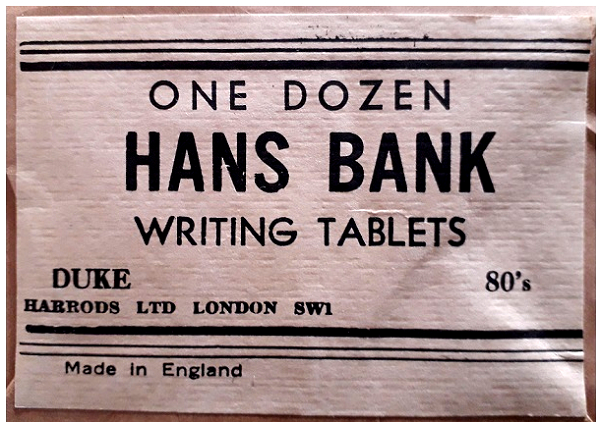
Pollen

When I first made an acquanitance with the work of Beresford Egan, some eighteen years or so ago, it was in his capacity as an artist and illustrator. His graphic work was clearly influenced by Aubrey Beardsley’s, but has an Art Déco flavour all its own. I learned at the time that he had also written some fiction, but only last year did I think to seek out his best-known novel Pollen (1933). I acquired a copy of the 2013 re-issue published by the Side Real Press.
It’s an account of bohemian types behaving badly in early ’30s London and Paris. Our protagonist – Lance Daurimer – is an unapologetically caddish & amoral painter, who finds a kindred spirit in the enigmatic Anna Beryl, who becomes his landlady. His cold-hearted seduction of two very different women provides the book with its plot, eventually serving him with a portion of comeuppance. I could have done with fewer of Daurimer’s tedious pronouncements on the hypocrisy of bourgeois social norms, but overall, while it’s no lost classic, I found it enjoyable, and better-written than I’d anticipated.

He Sees You When You're Sleeping
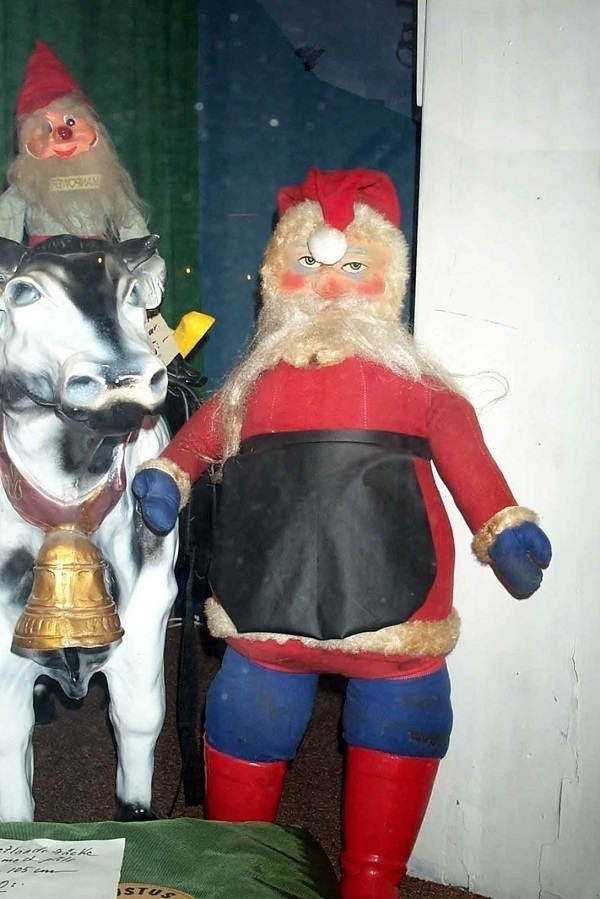
The figure in the image above isn’t Santa Claus gone wrong and hell-bent on brutal revenge, but rather a Swedish jultomte. It’s a twenty-year-old photo I’ve posted on-line before.
Re-hashing what I wrote back then: Sweden has only partly embraced and assimilated the standardized North American version of a North-Pole-based Santa Claus. A near-equivalent figure there is jultomten, the christmas gnome. A Tomte was, traditionally, a little fellow who dwelt under the floorboards in a homestead’s barn; a guardian spirit who looked after the farm’s people and their livestock. All he asked in return was that a bowl of porridge be left out for him at Yuletide. In the latter part of the 19th century, tomte began to take on, in the popular imagination, some of the attributes of St. Nicholas, coming to be associated with the bringing of Christmas gifts…
The one seen here graced the festive window display of a shop on Borgmästaregatan in Karlskrona, which sold horse-riding tack and pet-related paraphernalia. He didn’t re-appear the December after I’d first written about him: I hope I wasn’t in any way responsible for his retirement.
Flat Cap
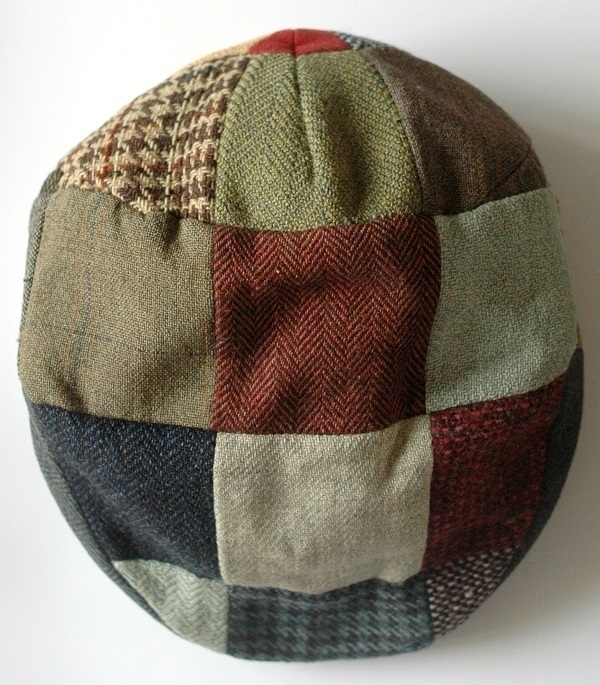
In my youth I never wore hats or caps – it wasn’t the done thing at the time, and, on the rare occasions I tried donning headgear, nothing seemed a good fit on my outsized cranium. My first winter in Sweden brought weather colder than I’d hitherto experienced, highlighting a necessity for some kind of skull insulation, and prompted me to acquire the first of a few beanie-style hats. For a little while longer, though, I continued to go bare-headed in all but the frostiest conditions.
During the daily round of dog-walks and of bus-trips back and forth to the office over the years that followed, I would increasingly often resort to donning a beanie, and would ponder from time to time whether some other type of head covering might work better for me. At length, in 2007, I decided to order some felt hats, and a couple of flat caps, having sought out on-line vendors catering for the larger-headed. I briefly tried to pretend otherwise, but the felt hats were not a success. They did not look good on me. On the other hand, I was straightaway at home in a flat cap. I found them practical and comfortable, and felt, moreover, that they suited me very well. I could see why my paternal grandfather had seldom been without one.
I ordered my first caps from Hanna Hats of Donegal, among them a patchwork cap like the one above. Regrettably, that one, and a couple of its replacements, ended up mislaid and lost. The one in the picture is (I think) my fourth, though I’ve held on to this latest example for a good nine years. I currently have another three caps, two of them of good Harris tweed, the last an unbranded green wool cap bought from a market stall in Monmouth.
When I first started wearing flat caps, others sometimes joked of them (if they mentioned them at all) as being ‘farmer hats’. Since 2013, and the advent on TV of Peaky Blinders – which helped re-popularise such caps – some now suppose I wear them because of the show. I gather it’s an impressively well-made production, but I’ve yet to catch so much as a minute of it.
I Killed Your Dog
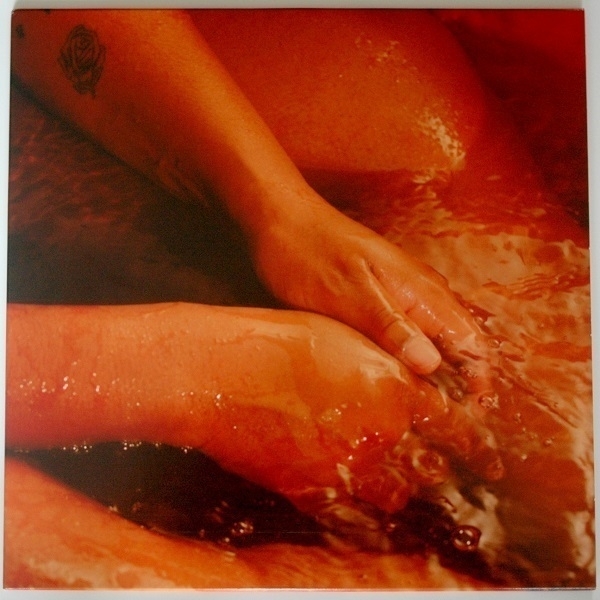
The inevitable ‘best of 2023’ listicles that proliferated on-line a couple of weeks ago served as a reminder of just how little new music I’d listened to this year. Feeling older is inescapable, but one can very easily forget just how out-of-touch one is. Of the dozen or so new albums I have heard in full during the year so far, my current favourite is one that made an appearance on several of those lists: I Killed Your Dog by L’Rain.
Much was made, in the press accompanying the album’s release, of how different it is in terms of mood and subject-matter from the same artist’s previous record (Fatigue: 2021; as mentioned on my old blog here). Indeed it is a brighter and cleaner affair, including some tracks – like ‘5 to 8 Hours a Day (WWwaG)’ and ‘Clumsy’ – which would have sounded quite out of place on the last album. My first impression, however, was of the similarities between the two releases, of their shared sound-world and the consistent compositional ‘voice’ in which they both speak.
I love I Killed Your Dog every bit as much as I loved Fatigue, which is just as well, as certain aspects of its release irked me. Again, it was not made available on CD, and I somewhat resented paying £27 for a piece of plastic in a paper sleeve in a cardboard one. The paper sleeve, moreover, wasn’t even usefully anti-static. My copy was on coloured vinyl, in a shade optimistically called ‘oxblood’. While it can look vaguely reddish on the turntable, held up to the light it seems to me a translucent shade resembling magenta, quite unlike anything an ox might bleed.
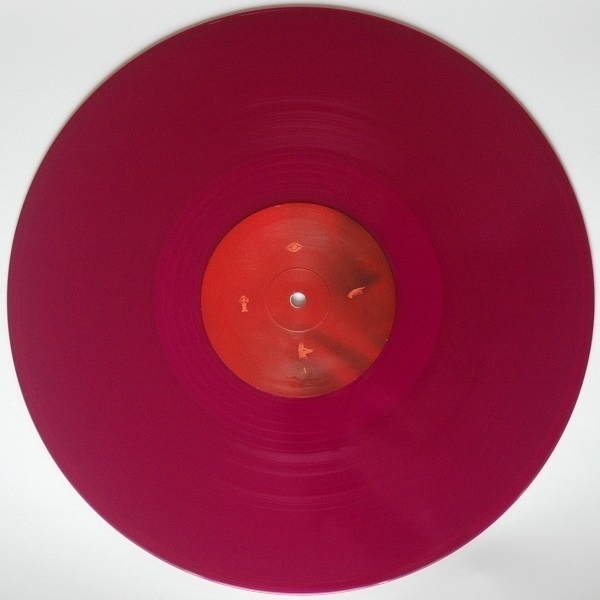
I should perhaps add, by way of disclaimer, that your dog is almost certainly fine, and, if not, it was nothing to do with me.
Single Malt
Is single malt scotch whisky worse than it was when I first started drinking it, or have my tastes just changed? As I more often favour rum these days over whisky, it must to some extent be the latter – but I meanwhile believe that some of my former favourites really aren’t what they once were. I was interested to read this article which corroborated my suspicions about certain former favourites (such as Talisker, Highland Park and Lagavulin) having gone downhill.
Scotch was still emerging from a trough of (relative) unpopularity in 1989/90 when I started sampling it in earnest. I was still a student, and, after having been virtuously frugal during my first two years at university, I succumbed to an inadvisable profligacy in the third. A certain proportion of the debt I racked up was attributable to the couple of dozen single malts I sampled through that year. My provisional conclusion at the end of it: nearly all of them were delicious.
Frugality was thrust back upon me for some time afterwards while I paid off those debts. After belatedly clambering back into the black in the later ’90s I was fortunate to be able to afford some wonderful bottles of defunct malts, such as my very favourite, Port Ellen; before stocks dwindled further, while demand rose, ultimately pushing prices beyond my improved means.
After another lengthy spell when I consumed very little of the stuff, I have in recent years resumed my single malt habit of old in a small way. A counter-example to the whiskies that are worse then they used to be is good old dependable Glenmorangie 10 y.o. This was the first single malt I ever tried (my father had been given some, and let me have a tiny taste) and it’s still his favourite, and one I also enjoy to this day: I’m slowly working my way through a bottle and will be having a glass at the weekend.
Payment On Demand

The image above is another film still scanned from a set of mounted slides I acquired about a decade ago. On the slide the film’s title is given in German as Die Ehrgeizige (which, according to Google Translate, means ‘The Ambitious One’) whereas the original English title was Payment on Demand. It was a 1951 release directed by Curtis Bernhardt which starred Bette Davis.
The project’s working title had been The Story of a Divorce, but both the title and the ending were subject to last minute changes imposed by Howard Hughes. A poster for the movie showed a stylized depiction of Davis in an off-the-shoulder black dress with the line “I made him now I’ll break him”, while the theatrical trailer enticed audiences with “The One Sin No Woman Ever Forgives!… – Unleashes An Emotional Conflict… The Fury Of Which The Screen Has Never Known!”